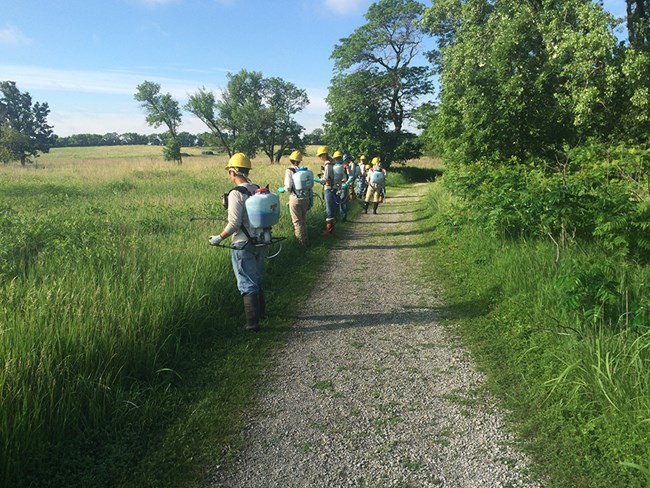
NPS-Photo
Good invasive, non-native control projects are relevant, effective, and feasible. Heartland EPMT staff work with park managers to evaluate each of these three criteria. Relevant projects clearly protect important and specific park resources. Effective projects use methods that are proven to work to control invasive, non-native plants. Feasible projects can be implemented with the available time, finances, equipment, expertise, and labor.
The Heartland EPMT works with park managers through each step of the decision-making and planning process. The EPMT staff helps park managers to evaluate field survey and risk information within the larger framework of park objectives. Next, the EPMT staff designs the specific control projects and implements the project on the ground within the park. Conservation corps teams assist with much of the labor. During field operations, map data are collected to identify the type and location of treatments. These data are later used to determine if a project is effective in reducing non-native, invasive plants. The Heartland EPMT uses this “plan-act-assess” cycle for all non-native, invasive plant control projects.
Last updated: November 3, 2017
